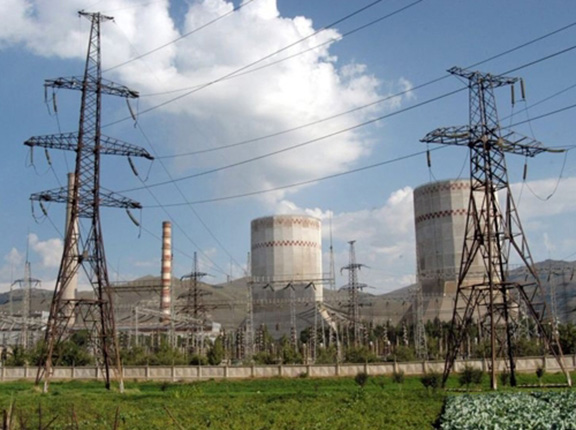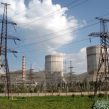
Sale of Armenia’s Monopoly Electricity Distributor Confirmed
Publication: Eurasia Daily Monitor Volume: 12 Issue: 185
By:

On September 30, the Russian firm RAO UES International and Tashir Group—a Moscow-based group of companies controlled by a Russian billionaire of Armenian origin, Samvel Karapetyan—announced the signing of an agreement pertaining to the sale of Electric Networks of Armenia (ENA), which is owned by the RAO UES. A press release by Tashir Group mentioned that the deal had already been approved by the Armenian government and will be concluded after a final decision made by Armenia’s state regulatory commission (a formality following the government’s approval decision). In addition, RAO UES and Tashir Group mentioned the transfer of the ownership rights to the Hrazdan thermal power plant, heretofore also held by RAO UES. Karapetyan also announced that his company and the Armenian government would jointly cover the difference in electricity costs for households and small businesses in 2015, compensating for ENA’s tariff increase as of August 1 (Tashir Group, September 30).
The signed purchase deal was an expected conclusion to recent months’ disputes about ENA (see EDM, September 21). However, it has raised some additional concerns, adding to previous skepticism about the lack of transparency regarding the planned deal. Specifically, the government’s formal approval concerning ENA’s sale had made no mention of Karapetyan’s Tashir Group. Instead, RAO UES had originally requested approval to sell to the Cyprus-registered company Liormand Holdings Limited. Nonetheless, Karapetyan’s close connections with the founders of Liormand Holdings were well known. Therefore, Tashir Group likely has already purchased or is about to buy the shares of the Cypriot company soon (Armenian Times, October 1).
The amount that will be paid for ENA is not yet known. A Renaissance Capital analyst estimated that the Armenian electricity distribution monopoly might cost up to $720 million and suggested that the final amount will likely be determined by the company’s outstanding debts as well as political considerations. The Hrazdan thermal power plant’s estimated market value is around $190 million, though the Armenian government had transferred it to Russian ownership in 2004 for $31 million (Rbc.ru, September 30). Including that asset in the deal between RAO UES and Tashir Group was unexpected; such a move means that RAO UES will no longer hold any more Armenian assets.
At the same time, the New York–based financial services firm Deloitte & Touche was named the winner of a tender to perform ENA’s audit, offering its service for $190,000. The only other participant in that tender, Grant Thornton, had asked for $305,000. Previously, Deloitte & Touche had also won a tender to complete the state regulatory commission audit, offering its services for $230,000, while McKinsey & Company had asked for over $1 million (Armenian Times, October 3). According to Armenian Deputy Prime Minister Vacheh Gabrielyan, the preliminary results of the state regulatory commission audit showed that the country’s electricity tariff rise had been justified (News.am, October 1).
Some details of Deloitte & Touche’s preliminary ENA audit report deserve attention: First of all, it mentions that Armenia’s Metsamor Nuclear Power Plant and several large hydropower plants generate around 70 percent of the electricity supplied to ENA—which is sold to ENA at favorable prices. However, tariffs for retail consumers are being determined on the basis of the high-cost energy generated by the natural gas–powered Hrazdan thermal power plant (Lragir.am, September 30). A few months ago, when the planned electricity tariff rise was being discussed, ENA representatives justified the price hike to the state regulatory commission and the government by noting an interruption in the Metsamor plant’s operation combined with insufficient production at the hydropower plants. This, they argued, required more intensive operation of the Hrazdan facility and had caused financial losses for ENA (Aravot.am, July 7).
Yet, that argument had already been used in 2014, when the previous tariff increase was passed. An investigation by the Armenian Times had indicated that Hrazdan, with its 1970s technology and the capability to produce 3.7 kilowatt hours (kWh) of electricity per 1 cubic meter of used gas had increased production, while, at the same time, the significantly more efficient Yerevan thermal power plant, equipped with modern Japanese machinery and capable of producing 7.6 kWh per cubic meter of gas, even had to decrease its output. The investigative report therefore suggested that the preference given to the Hrazdan thermal power plant could be explained by political reasons—its Russian (RAO UES) ownership and Gazprom’s wish to sell more gas to Armenia (Armenian Times, June 11, 2014).
Other problematic issues related to the Armenian energy production and distribution companies’ political connections can also be expected to surface in due course. For example, it has already been revealed that the Hrazdan plant is probably not the only one receiving special preferences. ENA is required by law to buy energy produced by small hydropower plants for a much higher price than the price paid to large plants. Small plants are considered ecologically friendlier, compared to other means of energy generation, and ENA is legally obligated to buy all energy generated by such plants for 15 years. Until September 2011, plants with an installed capacity up to ten megawatts (MW) had been considered small plants. Then, a government decree granted “small plant status” to facilities with installed capacity up to 30 MW. Since then, only one Armenian hydropower plant has benefited from the government’s decision: the 25 MW Dzoraget Hydro plant, owned by President Serzh Sargsyan’s son-in-law, as there are no other domestic plants with production capacities in the range 10–30 MW (Gala TV, October 2). It has been estimated that in four years, the surplus amount paid by ENA to Dzoraget Hydro (at the expense of retail consumers) has been about $3 million (Gala TV, October 3).
More revelations about the misuse of funds in energy production and the supply chain may be expected in the next few months. It also remains to be seen if Tashir Group will invest in the Hrazdan thermal power plant’s refurbishment and modernization, or whether it was simply required to buy that outdated asset as a supplement to ENA. The latter possibility should not be excluded: since it is dependent on the authorities like other large Russian businesses, Tashir Group might have been compelled to allow state-backed RAO UES to dispose of this less-valuable asset. In any case, Armenian consumers will probably not benefit from the ENA deal. Government officials have already used the preliminary audit results to justify the tariff increase, while the tariff difference will only be subsidized for one year from the state budget—effectively, by taxpayers.




